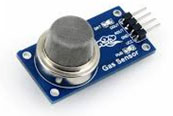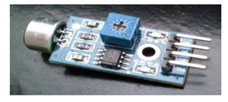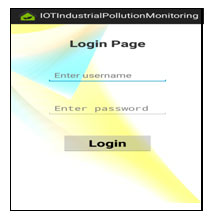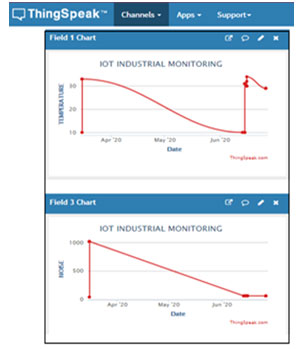1Professor, Department of Mechanical Engineering, Dr NGP. Institute of Technology, Coimbatore – 641048, Tamilnadu, India
2UG scholar, Department of Mechanical Engineering, Dr NGP. Institute of Technology, Coimbatore – 641048, Tamilnadu, India
Corresponding author email: nandhuarun@rediffmail.com
Article Publishing History
Received: 15/07/2020
Accepted After Revision: 12/09/2020
This platform relies on an IoT and a cloud computing technology to watch Industrial Pollution Monitoring and control the quality of environment in anywhere and anytime.An IoT-based system to monitor and control the pollutants andthereby helping them to moderate their trial on exposure topollutants. Industrial pollution monitoring is the collection of data at different locations of industries and at regular interval frames so as to give the information which might be utilized to characterize current conditions. Pollution Monitoring and controlling System demonstrates an efficient utilization of technology by which screen and report environmental parameters like gas, smoke and temperature and humidity. An efficient environmental monitoring system is required to monitor and assess the conditions just in case of exceeding the prescribed level of parameters (e.g., noise, CO and radiation levels). A solution for monitoring the noise and air pollution levels in industrial environment or particular area of interest using embedded computing system is proposed. This paper proposes an approach to build a cost effective standardize pollution monitoring device using the wireless technology (i.e.) Internet of Things (IoT) and a cloud computing technology.This work discusses the implementation of cloud based IoT system for air quality monitoring which is accessible as a web interface as well as in a type of an android application.
Air Pollution Monitoring, Cloud computing, Environmental pollution, Health Care IOT Analytics.
Nandhakumar S, RoobanVengat T, Ramkumar R, Rakesh K. IoT Based Pollution Monitoring System for Effective Industrial Pollution Monitoring and Control. Biosc.Biotech.Res.Comm. 2020;13(3).
Nandhakumar S, RoobanVengat T, Ramkumar R, Rakesh K. IoT Based Pollution Monitoring System for Effective Industrial Pollution Monitoring and Control. Biosc.Biotech.Res.Comm. 2020;13(3). Available from: https://bit.ly/33rEM6J
Copyright © Nandhakumar et al., This is an open access article distributed under the terms of the Creative Commons Attribution License (CC-BY) https://creativecommons.org/licenses/by/4.0/, which permits unrestricted use distribution and reproduction in any medium, provide the original author and source are credited.
INTRODUCTION
Atmospheric conditions keep on weakening every year because of development of civilization and increasing unclean emissions from industries and automobiles. Despite the fact that air is a vital asset forever; numerous individuals are unconcerned with the seriousness of air contamination or have as of late perceived the issue. Air pollution has surprised the world and is being unmistakably examined on the grounds that it has adjusted the environmental cycle like anything. Although air is an indispensable resource for all times, many of us are indifferent to the severity of pollution or have only recently recognized the problem (M.de Boer., 1998, Van Egmond., 1998, Sengupta et al., 2019). Among various types of pollutions like water, soil, thermal, and noise, air pollution is the most dangerous and severe, causing climate change and life-threatening diseases. Air pollution is one among the main players, leading to global climate change which has caused anomalies within the temperature pattern, crops production and has led to advent of newer diseases causing widespread devastation.
The wellbeing impacts of contamination are exceptionally extreme that cause stroke, lung malignant growth, what’s more, coronary illness. Moreover, air poisons have a negative sway on people and the world’s biological system, as watched in late worldwide air contamination issues like ozone exhaustion (Kulkarni and Zambare, 2018, Rout et al 2018, Saha et al., 2017). According to the World Health Organization (WHO), 90 percent of the populace presently inhales contaminated air, and air contamination is the reason for passing for 7 million individuals consistently (World Health Organization., 2011, Dhingra et al., 2019).
As tremendous research is going on in these serious issues to monitor and control the quality of air, the main purpose of this system is to estimate the quality of air for people and any other living thing which exists on the earth. The proposed embedded system model includes various sensors like MQ135 (sensitive to CO2, NOx, SO2, NH3, and benzene), Temperature and humidity sensor and noise level detector. It takes information about the surrounding environmental parameters such as Gas, Smoke and temperature and humidity through sensors and uploads it directly to the internet and determine the quality of environment so that preventive measures can be taken.
MATERIAL AND METHODS
In recent years, introduction of technologies just like the Internet of Things (IoT) and cloud computing has revealed new capabilities of real-time monitoring in various fields. Thus, many scholars have studied integrating these technologies to indoor air quality monitoring system (Liu et al., 2011). With air contamination getting rudimentary and arrangement of mechanical advances throughout the years have sanctioned people to establish their own checking framework that too at moderate cost and have had the option to surmise a characterizing job in the manner by which air contamination is being checked. Amalgamation of advanced mobile phones with IoT has additionally solidified the job of IoT and has taken unmeasurable steps in the field of Bio clinical applications (Sengupta et al., 2019).
However,these studies were only focused on integrating anarchitecture of IoT platform to monitor the air quality in Realtime. Since the technologies feature a wireless sensor network to automatically transmit, process, analyze, and visualize data, merging these new technologies also can also offer great advantages to enhance indoor air quality. Therefore, an IoT-based indoor air quality monitoring platform based on integration of cloud computing andIoT is presented in this research.An experimental wireless system that extends beyond the hotspots capabilities to supply wireless connectivity at distant areas and at a coffee cost. The system combines the paradigm of Wireless Mesh Networks with the Captive Portal technology to provide an outsized varies Internet-based communication services and applications. Finally, some experiments in terms of context services and traffic modelling, and demonstrate that the developed system can be easily deployed in terms of coverage, management, and offered services, (Sengupta et al., 2019, Marques et al 2019).
The pollution Dynamic Monitoring System has also been worked upon previously and there is a need of development of a smart environment monitoring system with IoT support to know the related information on the mobile itself. The rest of the paper is organized as follows; Section 3 discusses the existing systems and the need to present the proposed system followed by section 4 which presents the overview of an air pollution monitoring system. Section 5 speaks about the software implementation of IOT and section 6 presents the hardware description. Result and its discussion are presented in section 7 followed by conclusion.
Existing System: Existing devices used for pollution monitoring needed manual collection and processing of knowledge continuously from time to time which successively needs a group staff to continuously monitor and log the info. A model which has been created and it screens the changeability of boundary like Air, Noise, Temperature, Humidity and lightweight. Existing devices used for pollution monitoring needed manual monitoring of the device over continuously from time to time which successively needs a group of staff to continuously monitor the data and log into the information (Tastanand and Gokozan., 2019).
Manual systems put pressure on people to be correct altogether details of their work on all times, the matter being that people aren’t perfect. With manual systems the extend of service depends on individuals and this puts a requirement on management to run training continuously for the workers to keep them motivated and to make sure they are following the right procedures. It is oftentoo easy to accidentally switch details and find yourself with inconsistency in data entry or in hand written orders. Also, person responsible of knowledge logging may change the info as instructed by higher official’s makes it unreliable.
Existing System Disadvantages: Need of manual labor, cost of operation is high, has the risk of human error and data can easily altered.
Proposed System: The proposed work, uses locally available gas sensor for observing the polluted gases like Carbon monoxide (CO), Carbon dioxide (CO2) and parameters like temperature, humidity and sound. The sensors data can be uploaded to the cloud and if any of these exceeds a value then an email will be sent to the pollution board authority.The pollution authority can view the data from a remote location using an android app and he can also shut down the entire industry from a faraway location if need arises.The access to the data is secured with the help of encryption systems.A mobile application originally developed to make the proposed IoT system with features of anytime, anywhere. The device has been tested for reliability of the data and the platform has been implemented in a building to test its feasibility. The figure 1 shows the block diagram of this proposed system.
Hardwares Used: ArduinoUNO, Temperature and humidity sensor,Gas sensor, Noise sensor, Power supply, Wi-Fi, Cloud Softwares Used :Arduino IDE, Hyperterminal
Block Diagram:
Figure 1: Block diagram
Software Implementation for IoT
Cloud Computing Service: Cloud computing service involves development of functionality to manage the sensors where it might be required to coordinate between the Sensor Owner, the cloud provider and also the user. The sensor owners develop the system and develop functionality to publish the information in the cloud. The cloud providers then provide the cloud services and will charge the top user with some fee for the access. So as to avoid PaaS is used (Platform as a Service). PaaS provides a platform for software creation and is delivered over the net, and provides developers the liberty to think about building the software while still not having to worry about operating systems, software updates, storage, or infrastructure.
Android Service: Android has changed into a highly popular software operating system operating in voluminous of smartphones. Android scores in terms of user-friendly features and services. Many companies are using android software system for his or her smartphone device to produce high end features to their users. The Proposed system aims in designing a well-built system that monitors real time emission levels and temperature of all the Industries and required areas, store all the collected data in and analyze them in cloud using Internet of Things. This method uses various sensors like temperature and humidity sensor,MQ-135 sensor, noise sensor to measure various parameters like temperature, humidity, gas, noise respectively.
Arduino microcontroller is used which uses Reduced Instruction Set (RISC) program that reduces the complexity of the code significantly. WIFI module is utilized to store the data within the cloud which is flexible and simple to attach and it’s connected through the hotspot. The information are often viewed in any browser including smart phones by logging in using the credentials.For Air Quality Index to be calculated there’s a requirement to record the concentration of minimum three pollutants out of which one amongst should be PM10 or PM2.5.Thus, for the proposed system include Sulphur Dioxide (SO2), Nitrogen Dioxide (NO2), Particulate Matter (Size less than 10µm) or PM10 such that we are ready to calculate the AQI correctly and that we include temperature sensor to live the environmental parameters too. The project uses the concept of IoT for monitoring and controlling the system employing a ThingSpeak cloud server.
The Node MCU is configured to transfer the measured data of all sensors on a distant server. The net application provides global access to the measured data using any device that has internet connection capability. Data collected from the sensors are analyzed and passed the data within the sort of a string to update the net page within the remote server.The system also uses an android app called Industrial Pollution Monitoring System which shows the sensors data graphically. The proposed system employs Arduino together with Sulphur Dioxide (SO2), NO2 and PM-10 Sensor along with the temperature and humidity sensor to attain the task of air quality monitoring. The sensor senses the worth and with the assistance of Arduino forwards the value to the cloud. The info management module at the cloud additionally at the App suitably disseminates the knowledge to the specified users.
Hardware Discription:Arduino Uno:This module are often used for security, switch, and monitoring applications. Its accuracy is often easily adjusted for the convenience of usage. It uses a microphone which supplies the Arduino Uno.
Figure 2: Arduino UNO
In Figure. 2 Arduino UNO is exposed to source podium which involves of both a physical programming circuit board (Micro controller) and a bit of software (Integrated development Environment)
Temperature and Humidity sensor [DHT11]:
Figure 3: Temperature and Humidity sensor
DHT11, a Humidity and Temperature Sensor generate calibrated digital output. DHT11 are often interfacing with any microcontroller like Arduino, Raspberry Pi, etc. and get instantaneous results. DHT11 may be a low-cost humidity and temperature sensor which provides high reliability and long-term stability. In Figure 3we infer that the sensor consist of 4 pins namely Vcc, Data pin, Nc, and GND respectively.
Gas Sensor
Figure 4: Gas Sensor
In current technology scenario, monitoring of gases produced is extremely important. From home appliances like air conditioners to electric chimneys and safety systems at industries monitoring of gases is extremely crucial. Thus gas sensors play a major role in industrial pollution monitoring. Figure 4 is a basic gas sensor used in most of the gas detecting equipments.
Sound Sensor Module: The sound sensor module provides a simple thanksto detect sound and is usually used for detecting sound intensity. The sound sensor module consists of a microphone, an amplifier, a peak detector and a buffer. Figure.5 is a sound sensor module that detects a sound, processes it as an output voltage and finally sends to the microcontroller which performs the necessary process.
Figure 5: Sound Sensor module
Internet of things:The Internet of Things (IOT) is revolutionizing and improving the way of work and live but it’s only possible with pervasive, flexible and long-lived wireless property. At the center of it all may be a small device known as the IOT Module that’s liable for connecting nearly something to wireless networks. IOT Modules associate with a large vary of wireless technology standards and that they give a spread of options which will impact the success of IOT applications.
Power supply: The AC voltage, usually 220V, is linked to an electrical device that stages that AC voltage down to the total of the measured DC output. A Diode rectifier then provides a full wave improved voltage that’s at the start filtered by a modest capacitor filter to supply a DC voltage. This successive DC voltage mostly has particular ripple or AC voltage difference. A controller circuit removes the wave and moreover remains equal DC value despite the fact that the input DC voltage varies, or the load connected to the output DC voltage changes. This voltage regulation is typically obtained exploitation one of the favored transformer IC units.
RESULTS AND DISCUSSION
The aim of this technique is to assist in reducing respiratory problems related to industrial activities and to watch the level of pollution. The main focus is on finding solutions to the increasing problem of harmful gasses amounting from industrial practices in the country. In this work, sensors were implemented and used to detect the presence of undesired gases in the air of residential areas near factories and industrial activities.Figure.6 shows the various parameter (gas, humidity, temperature and noise) values that are collected and displayed.
Figure 6: LCD display
The sensors provide continuous monitoring and record data for air pollution continuously, where these results are reported in the figure 7- 10 and analyzed using Internet of Things technology.
Figure 7: Login page
Figure 8: Parameters Values
Figure 7 frontend of the software and Figure 8. shows the obtained results. Figure 9 and 10 shows the parameters variation in the month of April, May and June 2020. From this figure, it has been observed that the proposed method yields good results and the data’s which are stored in the cloud can be retrieved when and wherever required. Also using IoT technology, the parameters can be viewed by mobile phone.
Figure 9: Temperature and noise flow
Figure 10: Humdity and Gas flow chart
CONCLUSION
The system to watch the air of environment using Arduino microcontroller, IOT Technology is proposed to measure quality of air. With the utilization of IOT technology, the method of monitoring various aspects of environment like air quality monitoring issue can be done and it has been retrieved when and wherever it is required. The MQ135 gas sensor gives the sense of various sorts of dangerous gases and Arduino is the heart of this mechanism which controls the whole process. Wi-Fi module connects the entire process to internet and LCD is employed for the visual Output. The Automatic Air & Sound management system may be a breakthrough to contribute an answer to the most important threat. The air and sound monitoring system overcomes the matter of the highly-polluted areas which may be a major issue. Moreover, it is an auto monitoring system; the major advantage of this is to reduce the involvement of human being in the hazardous environment and assures safety also. It supports the new technology and effectively supports the healthy life concept. This system has features for the people to watch the quantity of pollution on their mobile phones using the appliance.
REFERENCES
Sengupta A, Varma, V, SaiKiran M, Johari A, Marimuthu R (2019), Cost-Effective Autonomous Garbage Collecting Robot System Using IoT And Sensor Fusion, International Journal of Innovative Technology and Exploring Engineering, 9(3) pp. 1-8.
Kavitha B. C , Jose D, and. Vallikannu, R (2018), IoT based pollution monitoring system using raspberry–PI, International Journal of Pure and Applied Mathematics, 118.
Saha D, Shinde M, and Thadeshwar, S. (2017), IoT based air quality monitoring system using wireless sensors deployed in public bus services, in ICC ’17 Proceedings of the Second International Conference on Internet of things, Data and Cloud Computing, Cambridge, United Kingdom.
Rout G, Karuturi S, and Padmini T. N (2018), Pollution monitoring system using IoT ARPN Journal of Engineering and Applied Sciences, 13, pp. 2116–2123,
Marques G, Ferreira C, and Pitarma R. (2019), Indoor air qualityassessment using a CO2 monitoring system based on Internetof Things, Journal of Medical Systems, 43(3), pp. 67.
Liu J, Chen Y and Lin T (2011), Developed urban air quality monitoring system based on wireless sensor networks, in 2011 Fifth International Conference on Sensing Technology, pp. 549–554, Palmerston North, New Zealand, December
Kulkarni K. A. and. Zambare M. S. (2018) The impact study of houseplants in purification of environment using wireless sensor network, Wireless Sensor Network, 10(3), pp. 59–69,
De Boer. M (1998), Facing the Air Pollution Agenda for the 21st Century in Air Pollution in the 21st Century,Priority Issues and Policy, T. Schneider, Elsevier Science B.V.: Netherland, pp.3-8.
Tastan M and Gokozan H. (2019), Real-time monitoring of indoor air quality with internet of things-based E-nose.Applied Sciences, 9(16), article 3435.
Van Egmond N.D. (1998), Historical Perspective and Future Outlook, in Air Pollution in the 21st Century,Priority Issues and Policy, T. Schneider, Elsevier Science B.V.: Netherland,1998, pp.35-46.
Swati Dhingra, R. B. Madda, Amir H. Gandomi, Rizwan Patan, Mahmoud Dane (2019), Internet of Things Mobile–Air Pollution Monitoring System (IoT-Mobair), IEEE Internet of Things Journal, 6 pp.5577-5584.
World Health Organization (2011), Air Pollution and Child Health-Prescribing Clean Air, WHO, Geneva, Switzerland, 2018,


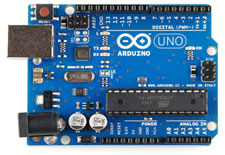
![Temperature and Humidity sensor [DHT11]: Figure 3: Temperature and Humidity sensor](http://bbrc.in/wp-content/uploads/2020/11/Vol_13No_3_IoT_NAN_Fig3.jpg)
